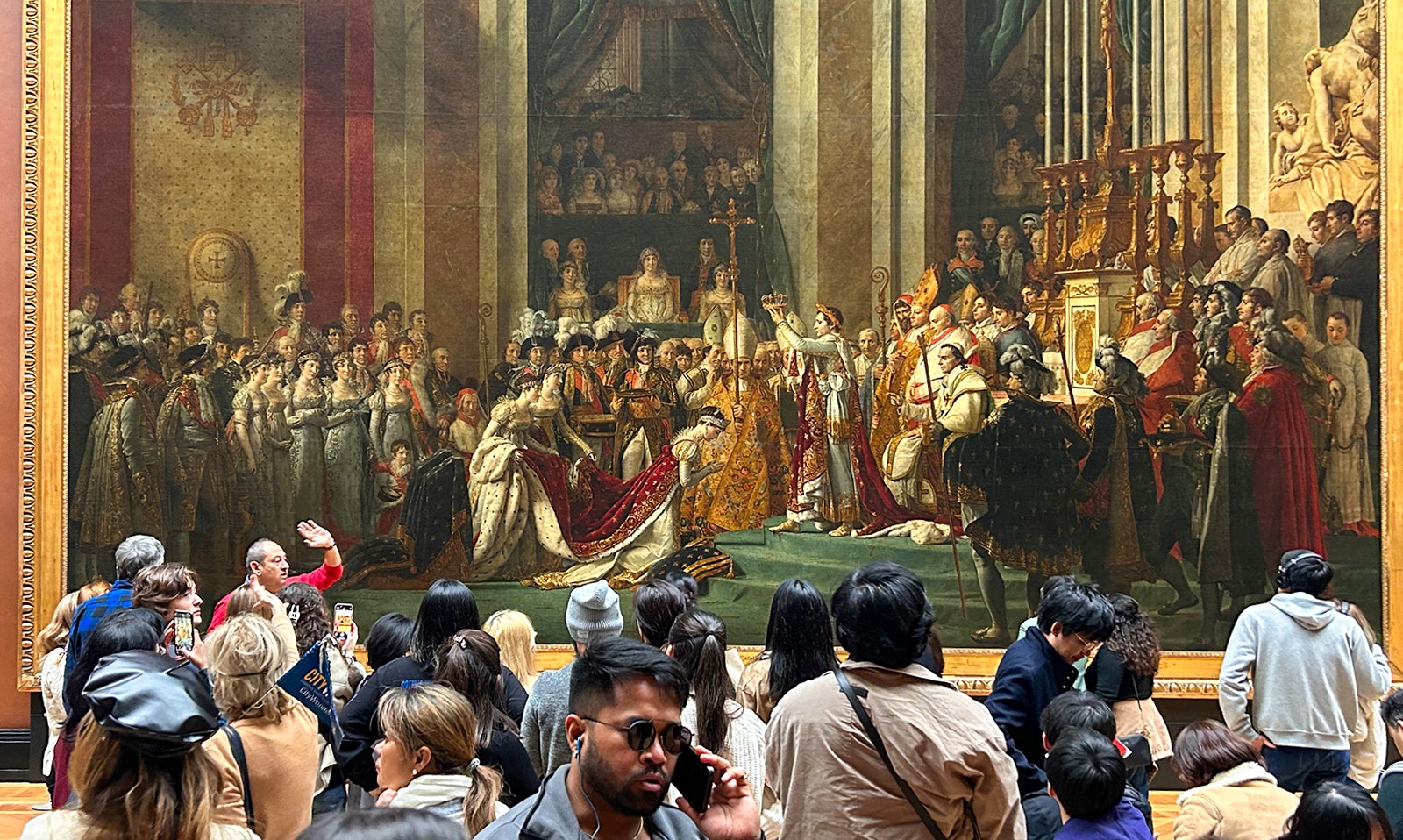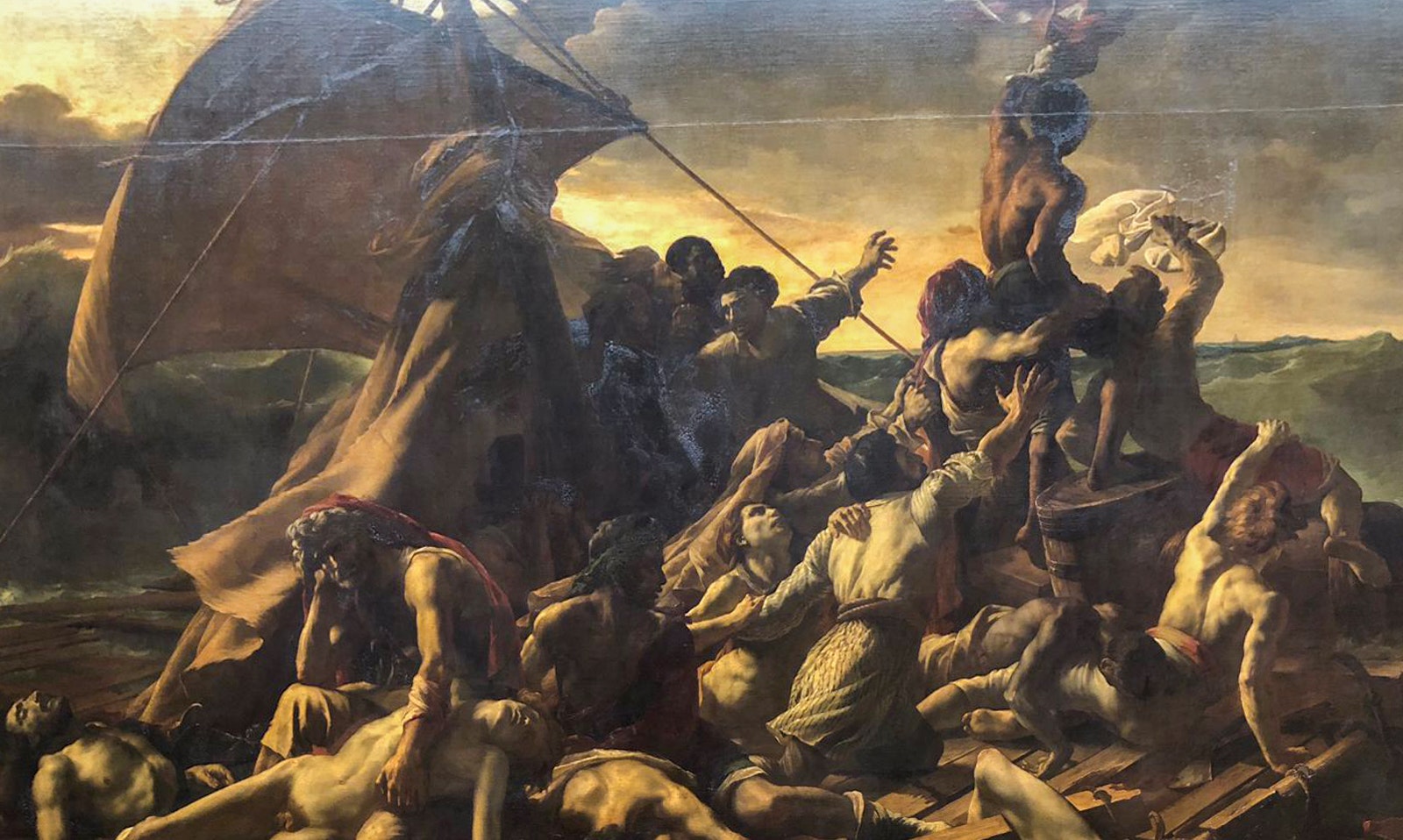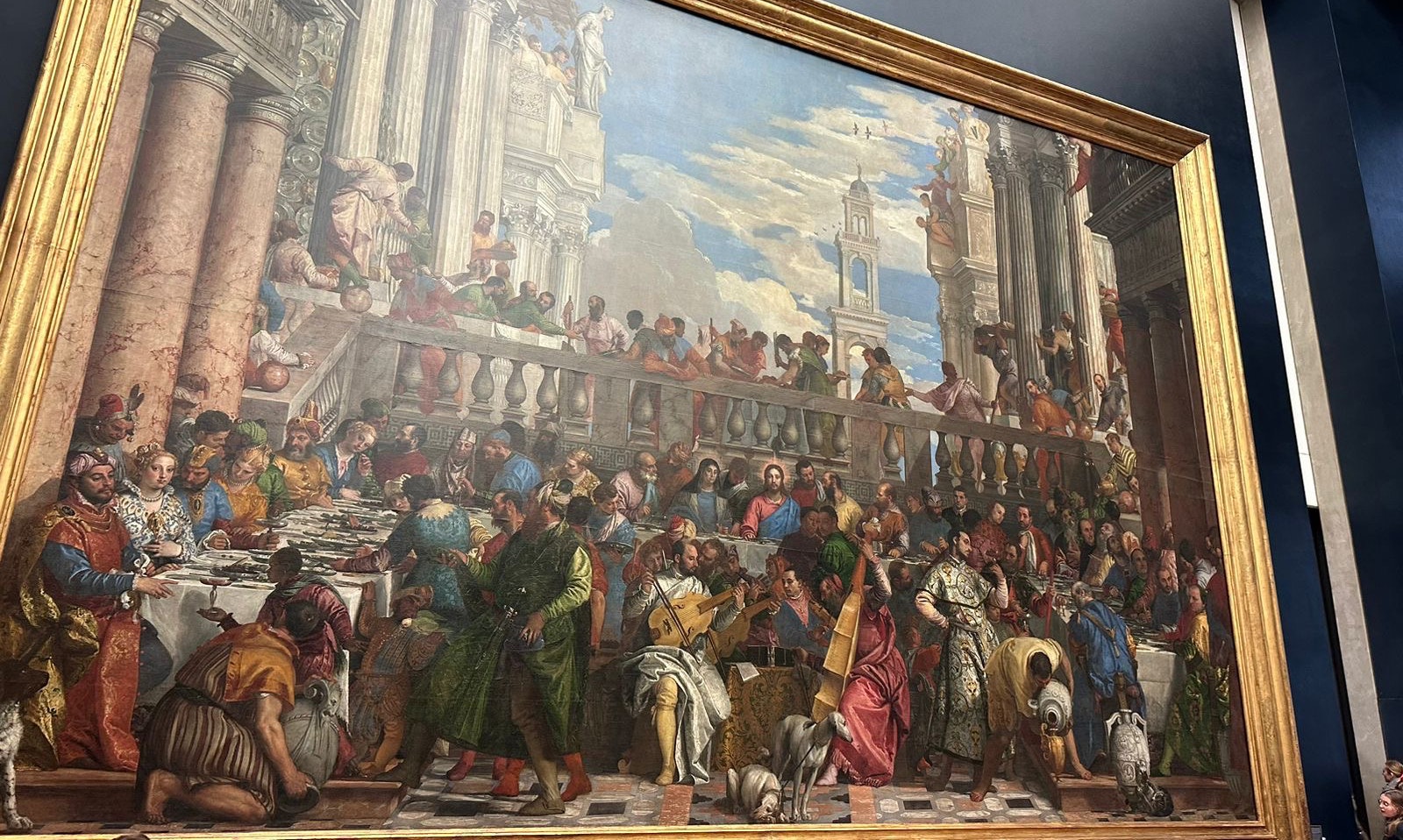The Louvre is the ultimate art destination, boasting a rich history that spans over two centuries and an astounding collection of 35,000 works of art. Amazingly, it all began with just 500 pieces from royal collections and church properties. Today, the museum is home to some of the most revered masterpieces in the world.
While people flock to see the Mona Lisa, there’s an abundance of other remarkable paintings you should not miss. On average, visitors spend about 2-3 hours at the Louvre, so ensure you make the most of your time by checking out these top 10 famous paintings. Here's a fun fact: If you dedicated just 30 seconds to each artwork, it would take you roughly 200 days to see everything!
Recommended tickets to Louvre Museum
10 most famous paintings at the Louvre
1. Mona Lisa
Location: Salle des États (State Room)
Mona Lisa's mysterious smile has intrigued people for decades, and there are at least four versions painted by Leonardo da Vinci and his students. The most famous version, hanging in the Louvre, was painted by da Vinci between 1503 and 1519. Interestingly, it gained widespread fame primarily because it was stolen from the Louvre in 1911. Before that, it was mostly known in art circles. The sitter, commonly believed to be Lisa del Giocondo, adds to its allure. Leonardo da Vinci's genius further amplifies the painting’s fame. His sfumato technique makes the portrait incredibly smooth and lifelike, rendering her natural, even without visible eyebrows or eyelashes, though the original probably featured both.

2. The Coronation of Napoleon
Location: Room 75 (Denon Wing, 1st floor)
Jacques-Louis David's The Coronation of Napoleon, completed in 1807, depicts the grand ceremony where Napoleon crowned himself Emperor at Notre-Dame Cathedral in 1804. Rather than showing himself, David focused on the dramatic moment when Napoleon crowned his wife, Josephine. This colossal painting was political propaganda, showcasing Napoleon's authority and the Church's backing. It’s a masterpiece of French Neoclassical art, and it is as remarkable for its historical significance as it is for its intricate details. Initially unveiled in 1808, it has since remained a highlight of the Louvre’s collection.

3. The Raft of the Medusa
Location: Room 700
Painted by Théodore Géricault between 1818 and 1819, The Raft of the Medusa depicts the harrowing scene following the 1816 wreck of the French frigate Méduse, where over 150 men were stranded on a raft. At just 27 years old, Géricault took extraordinary measures to ensure the piece's realism. He talked to survivors, examined corpses, and constructed a scale model of the raft. This meticulous attention to detail set a new standard for historical art. It became a sensation when the painting was showcased at the Paris Salon in 1819, establishing Géricault as a leading figure in the Romantic movement and influencing future artists like Delacroix and Courbet.

4. Liberty Leading the People
Location: Gallery 77
One of the key paintings in the Louvre, Liberty Leading the People by Eugène Delacroix, represents the 1830 July Revolution that overthrew King Charles X’s reign. The artwork features a bare-chested woman symbolizing Liberty as she leads spirited revolutionaries over barricades. She holds the French tricolor flag and a musket, symbolizing the struggle against oppression. This painting, often associated with Marianne, stands for the French Republic’s values: "Liberty, Equality, Fraternity." You’ll also notice the Notre-Dame Cathedral in the backdrop, linking the scene to a specific historical moment. Because of its cultural importance, this painting has also appeared on French stamps and currency until the late 20th century.

5. The Barque of Dante
Location: Modern French Painters
If you liked The Raft of the Medusa, be sure to see Eugène Delacroix's The Barque of Dante, painted in 1822. This artwork portrays Dante and Virgil navigating through chaotic waters filled with tormented souls. Notice the tension between Dante’s panic and Virgil’s calm guidance. The fiery backdrop and turbulent waters symbolize the struggles in Hell, with Virgil representing wisdom and control. As Delacroix’s first major work, this painting marks his transition from Neoclassicism to Romanticism—worth checking out!
6. Grande Odalisque
Location: Room 75
Painted by Jean-Auguste-Dominique Ingres in 1814, the Grande Odalisque depicts a reclining odalisque (concubine) with elongated features, giving her a slightly unreal appearance. Critics often debate these distortions, which break away from traditional norms. Ingres drew inspiration from earlier masterpieces, like Titian's Venus of Urbino and Parmigianino's Madonna with the Long Neck, which are known for idealizing female beauty. This daring blend of style and subject matter makes The Grande Odalisque a must-see at the Louvre.

7. The Wedding at Cana
Location: Salle des États (state room)
Located in the same room as the Mona Lisa, Paolo Veronese's The Wedding at Cana is a hidden gem that shouldn't be missed. Painted between 1562 and 1563, it depicts Jesus performing the miracle of turning water into wine at a wedding feast. The scene features over 130 figures dressed in rich 16th-century Venetian attire. Central to the painting is Jesus, surrounded by the Virgin Mary and his disciples. The vibrant colors and intricate details showcase Veronese’s artistry, making it a beautiful blend of sacred and social themes.

8. The Battle Between Love and Chastity
Location: Room 5
Painted by Pietro Perugino in 1503, The Battle Between Love and Chastity is one of the standout works of the Italian Renaissance. Originally commissioned for Isabella d'Este, the Marchesa of Mantua, this striking tempera on canvas captures the eternal struggle between carnal love and virtuous chastity. The scene is set against rolling hills, and the painting showcases a battle featuring allegorical figures like Minerva, Venus, and Diana. Love is seen as a young, athletic figure, while Chastity is a graceful woman in flowing garments. The vibrant colors and intricate details highlight Perugino's incredible skill.
9. Triumph of the Virtues
Location: Room 5
Andrea Mantegna’s Triumph of the Virtues (also known as Minerva Expelling the Vices from the Garden of Virtue), completed in 1502, is an intricate painting displayed in Room 5 of the Louvre. This artwork illustrates the goddess Minerva banishing Vice from a garden, symbolizing the triumph of good over evil. In the scene, Minerva rescues the goddess Diana from a centaur, while the sky features allegorical figures of Faith, Hope, and Charity. Mantegna’s attention to detail and vibrant storytelling make this painting a fascinating blend of classical mythology and moral lessons.
10. St. Francis Receiving the Stigmata
Location: Room 3
St. Francis Receiving the Stigmata by Giotto di Bondone is a crucial piece! Painted around 1295-1300, this panel shows St. Francis of Assisi receiving the stigmata, or the wounds of Christ, during a powerful vision. In the scene, St. Francis is kneeling in prayer, and rays of light from a seraph strike him, symbolizing a deep spiritual moment. What’s remarkable about this work is how Giotto shifted from the older, more rigid Byzantine style and laid the groundwork for Renaissance art. Look closely at the natural expressions and emotions—Giotto’s approach makes the scene more relatable and lifelike.

